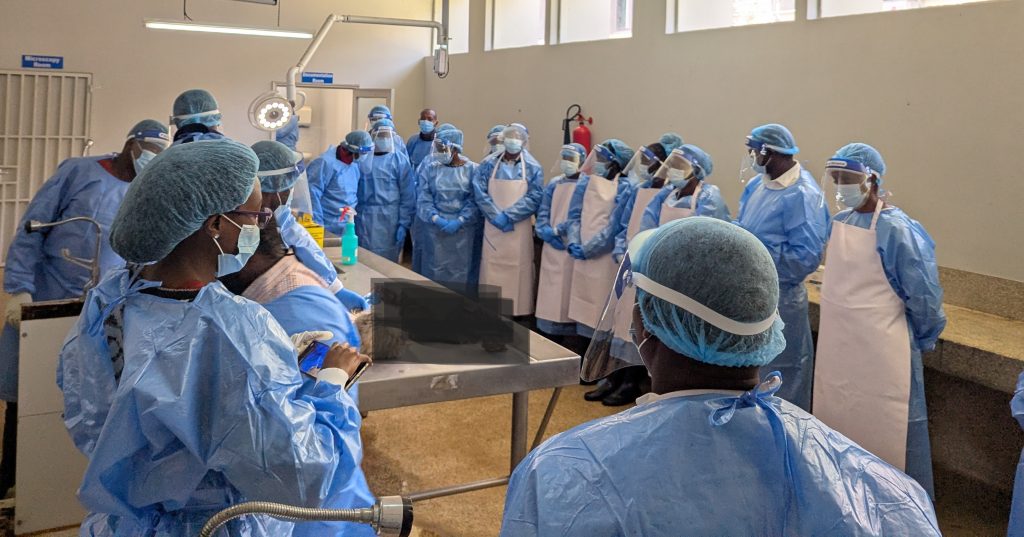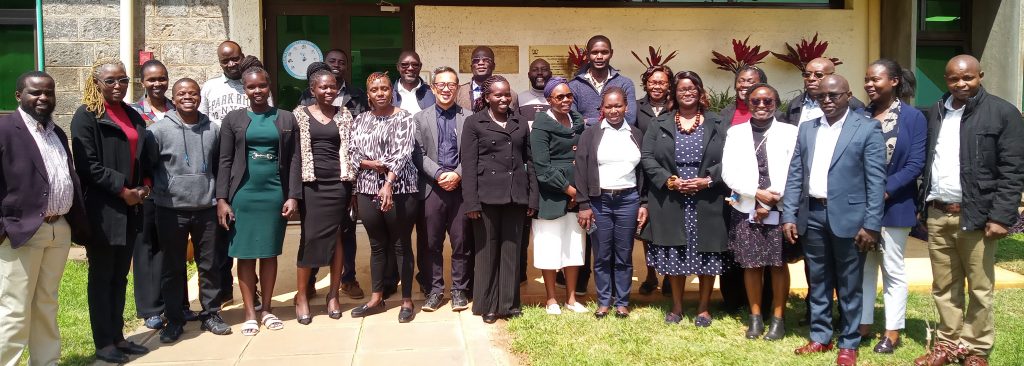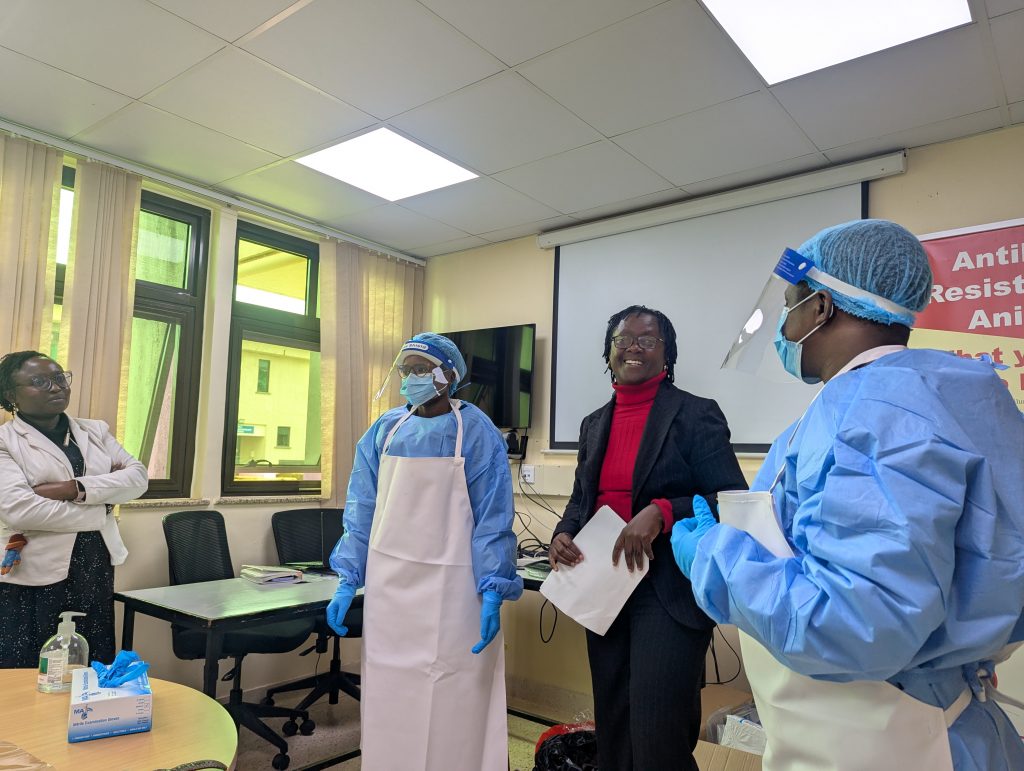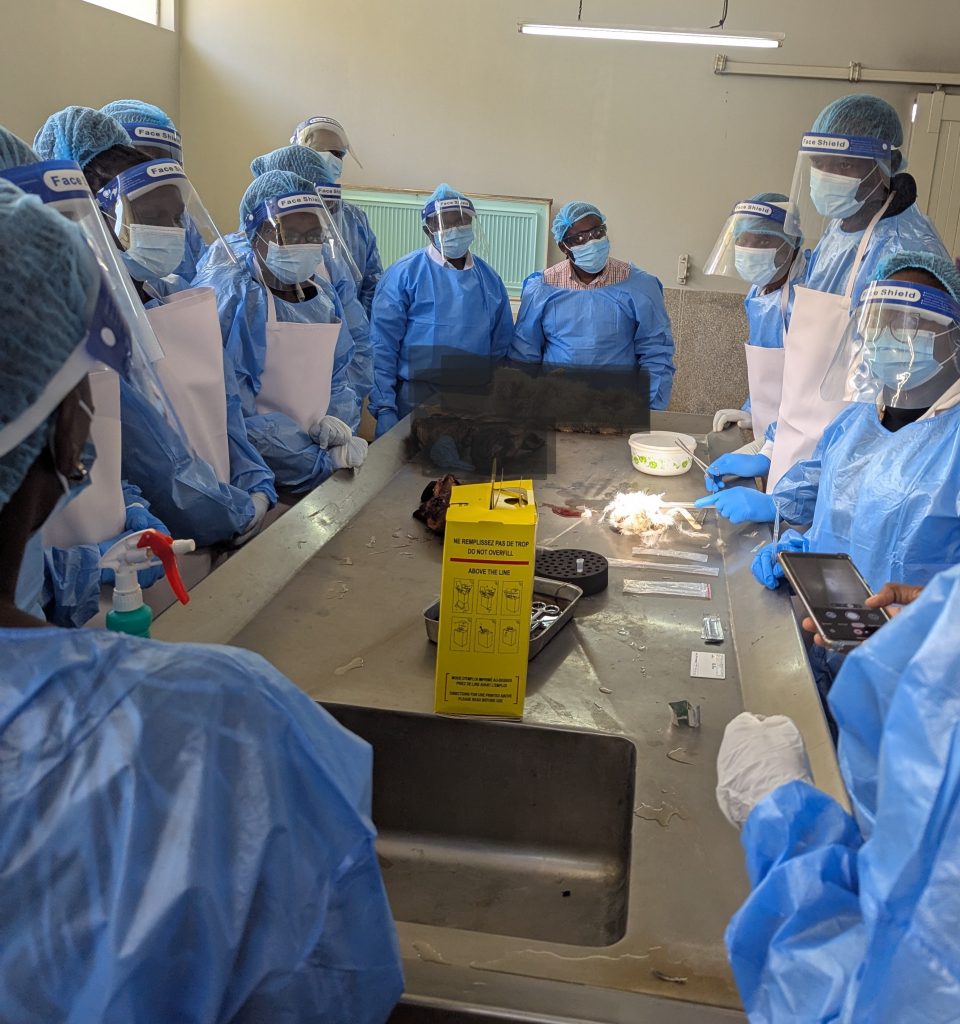– Jointly organized with the National Veterinary Reference Laboratory, involving veterinary and wildlife institutions from across the country –
On July 30, 2025, a practical field training on rapid rabies diagnosis and strengthening of national surveillance capacity was held at the National Veterinary Reference Laboratory (NVRL) in Kabete, near Nairobi, Kenya.
The training was jointly organized by NVRL and the Kenya Rabies Project, led by Associate Professor Nobuo Saito, Deputy Director of the Nagasaki University Institute of Tropical Medicine – Kenya Office. Participants included representatives from regional veterinary laboratories and wildlife-related institutions across the country.

■ Background: Why field-based diagnostic capacity matters
Although rabies is a fully preventable disease through timely vaccination, it continues to cause thousands of human deaths each year, particularly in Africa and Asia. In Kenya, the limited number of specialized laboratories makes it difficult to quickly detect and respond to suspected cases, especially in remote areas.
To address this challenge, Oita University and Adtec Inc. (Usa City, Oita Prefecture, Japan) have developed a Lateral Flow Device (LFD) for rabies that allows for simple and rapid diagnosis at the field level, without the need for advanced laboratory infrastructure.
Furthermore, RNA can be extracted from positive LFD kits for genomic analysis, enabling nationwide surveillance of rabies virus lineages and transmission routes—including possible spillover between domestic and wild animals.
This initiative is being driven by Associate Professor Nobuo Saito, who has worked extensively to strengthen field-based rabies control systems in both Kenya and Zambia. The project is seen as a potential African-led model that integrates diagnosis and genomic surveillance, and could be adapted in other countries in the future.

■ Training Overview
he training began with a presentation by Dr. Saito, who explained the project’s background and objectives. He emphasized the importance of expanding rabies diagnostic capacity across Kenya and the potential impact of LFD-based rapid testing on field surveillance.
Participants then received practical instruction on proper donning and doffing of personal protective equipment (PPE), followed by lectures on the principles and application of rabies diagnosis using LFDs.

In the afternoon, participants engaged in hands-on training, practicing brain sample collection and the use of LFDs under the guidance of expert veterinarians.
To ensure that each participating institution could immediately apply what they learned, LFD test kits and essential tools were distributed to all attending organizations at the end of the session.

■ Participation from Across Kenya
The training brought together staff from seven regional veterinary laboratories under NVRL, as well as five wildlife-related institutions and the University of Nairobi.
◆ Participating veterinary laboratories (7 locations)
NVRL – Nakuru, Mariakani, Witu, Kericho, Garissa, Karatina, Eldoret
◆ Wildlife and animal welfare institutions
- Kenya Wildlife Services (KWS)
- Vetin Wild
- Wildlife Research and Training Institute (WRTI)
- Kenya Society for the Protection & Care of Animals (KSPCA)

■ Toward a Nationwide Surveillance System Using LFDs
This training marked a key step toward building a decentralized, field-based diagnostic network for rabies across Kenya. By enabling veterinary and wildlife officers to safely and accurately detect rabies in the field, response time can be significantly improved—even in areas lacking laboratory access.
In addition, the collection and genomic analysis of positive LFD kits will help clarify transmission dynamics and virus lineages, contributing to better-targeted vaccination campaigns and national policy decisions.
These efforts directly support the global goal of eliminating dog-mediated human rabies by 2030.
■ Funding and Support
This project is supported by the Japan Society for the Promotion of Science (JSPS) under the Grant-in-Aid for Scientific Research (Project number: 24KK0174), and is implemented by the Nagasaki University Institute of Tropical Medicine – Kenya Office, under the leadership of Dr. Nobuo Saito, Associate Professor.
